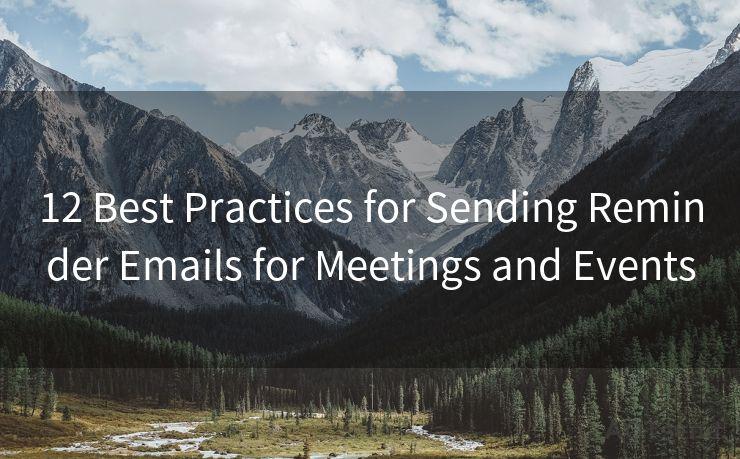12 Best Practices for Sending Reminder Emails for Meetings and Events




In the fast-paced world of business, meetings and events are crucial for networking, collaboration, and decision-making. However, with busy schedules and information overload, it's easy for invitees to forget about an upcoming event. That's where reminder emails come in. Here are 12 best practices for sending effective reminder emails for meetings and events, ensuring maximum attendance and participation.
1. Plan Your Reminders
🔔🔔🔔
【AOTsend Email API】:AOTsend is a Managed Email Service for sending transactional emails. Support Email Types: reminders, authentication, confirmations, notifications, verification codes, invoices, password resets, account activations, billing statements, two-factor authentication (2FA), and one-time passwords (OTP) emails, etc. $0.28 per 1000 Emails. 99% Delivery, 98% Inbox Rate.
You might be interested in:
Why did we start the AOTsend project, Brand Story?
What is a Managed Email API, How it Works?
Best 25+ Email Marketing Platforms (Authority,Keywords&Traffic Comparison)
Best 24+ Email Marketing Service (Price, Pros&Cons Comparison)
Email APIs vs SMTP: How they Works, Any Difference?
Before sending out reminders, have a clear plan. Determine the purpose of the email, the key information to include, and the ideal timing for sending reminders. This planning ensures that your emails are targeted, informative, and timely.
2. Use Clear and Concise Language
When writing your reminder emails, use language that is clear, concise, and to the point. Avoid jargon or complex sentences. The goal is to quickly and effectively communicate the essential details of the meeting or event.
3. Personalize Your Messages
Personalization is key in email marketing. Use the recipient's name in the greeting and, if possible, tailor the content to their specific interests or roles. This helps to create a more engaging and relevant experience for the reader.
4. Highlight Key Information
The reminder email should include key details such as the event date, time, location, and agenda. Use bold or italic formatting to emphasize this critical information, making it easier for recipients to quickly grasp the essentials.
5. Include a Clear Call to Action
Every reminder email should have a clear call to action (CTA). Whether it's to RSVP, confirm attendance, or prepare materials, make sure the CTA is prominent and easy to understand.
6. Optimize for Mobile Devices

Since many people check their emails on mobile devices, it's essential to ensure that your reminder emails are mobile-friendly. Use responsive email templates that adjust to different screen sizes, ensuring readability and usability on any device.
7. Test and Optimize Your Emails
Before sending out your reminders, test them across different email clients and devices. This helps you identify and fix any formatting or display issues, ensuring a consistent and professional appearance for all recipients.
8. Send Reminders at the Right Time
Timing is crucial when sending reminder emails. Send reminders a few days before the event, giving recipients enough time to prepare, but not so far ahead that they forget about it. You can also consider sending a final reminder a few hours before the event starts.
9. Use Engaging Subject Lines
The subject line is the first thing recipients see, so make it count. Use action-oriented and attention-grabbing language to increase open rates.
10. Provide Additional Resources
If there are relevant resources or materials related to the meeting or event, include links or attachments in your reminder email. This could include agendas, maps, or background information that helps recipients better prepare.
11. Follow Up After the Event
Don't forget to send a follow-up email after the event, thanking participants and providing any relevant next steps or additional resources. This helps to solidify relationships and encourage future participation.
12. Track and Analyze Results
Finally, track the performance of your reminder emails. Monitor open rates, click-through rates, and attendance to understand what works and what doesn't. Use this data to refine your strategy for future events.
By following these 12 best practices, you can effectively use reminder emails to boost attendance and participation at your meetings and events. Remember, the key is to provide relevant, timely, and engaging content that resonates with your target audience.




Scan the QR code to access on your mobile device.
Copyright notice: This article is published by AotSend. Reproduction requires attribution.
Article Link:https://www.mailwot.com/p3938.html



